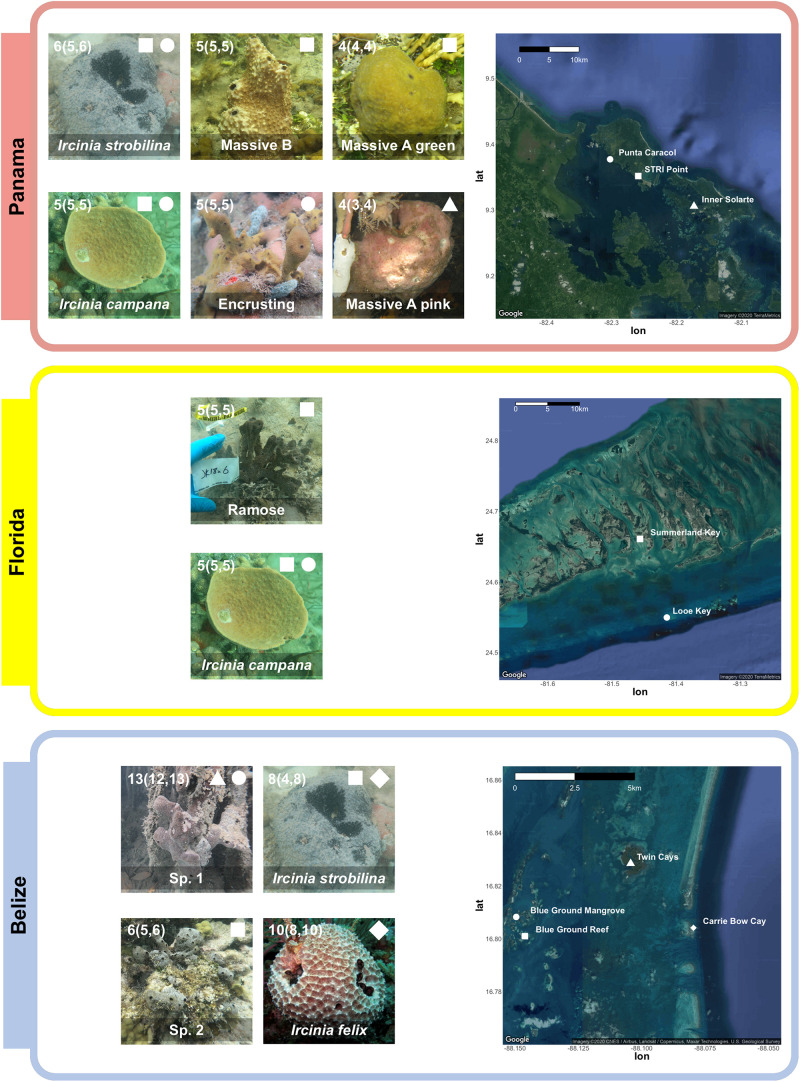FIGURE 1.
Top: Four Panamanian growth forms were collected from three sites: Massive A pink was collected from Rhizophora prop roots at Inner Solarte, a network of mangrove hammocks; Massive A green and Massive B were collected from STRI Point, a Thalassia seagrass-dominated habitat; and Encrusting was collected from Punta Caracol, a coral patch reef. I. campana and I. strobilina specimens were also collected from STRI Point and Punta Caracol. Middle: specimens of a growth form (Ramose) and I. campana were collected from a seagrass bed on Summerland Key, Florida; two specimens of I. campana were also collected from Looe Key. Bottom: Two Belizean growth forms were collected from three sites: Sp. 1 specimens were collected from Rhizophora prop roots at the Twin Cays and from mangrove hammocks adjacent to the series of Blue Ground coral patch reefs; and Sp. 2 specimens were collected from the coral reefs at Blue Ground. Specimens of I. strobilina were collected form the same patch reef inhabited by Sp. 2 and also from the forereef at Carrie Bow Cay, and I. felix specimens were collected from the Carrie Bow Cay forereef. I. felix photo credit: Patrick Erwin (Hentschel et al., 2012). Numbers in each photograph correspond to sample size, reported as total sample size (samples in 2bRAD dataset, samples in 16S dataset), less the transcriptomic sample of the Ramose growth form. A complete sampling overview can be found in Supplementary Table 1.

